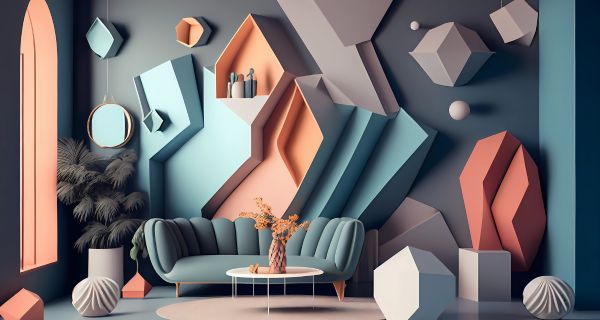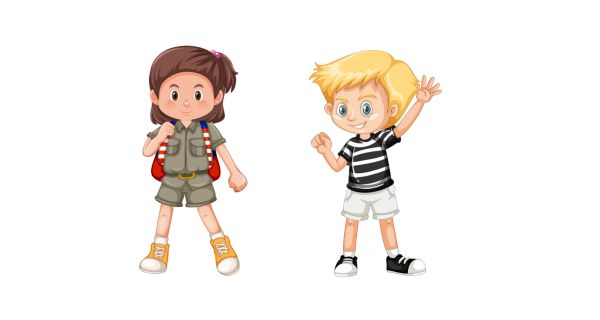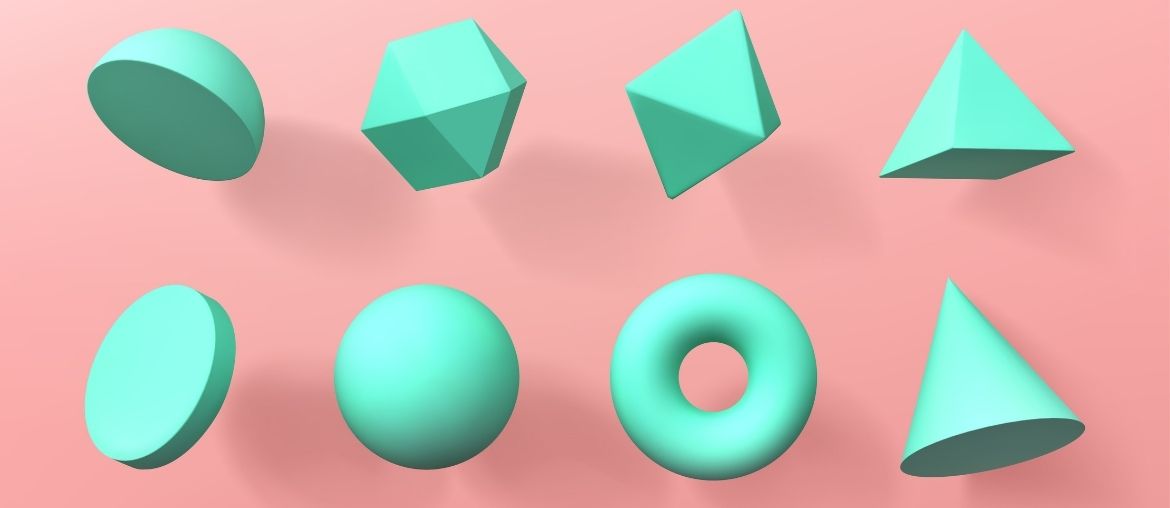Have you ever wondered how movies achieve stunning special effects or how realistic images of objects are created? The answer lies in 3D rendering. In the current scenario, it has earned a special place in most industries, for various business applications. You’ve likely encountered 3D visualizations while scrolling through social media, flipping through magazines, or seeing eye-catching billboards. These vibrant and photorealistic images have a powerful impact, evoking emotions and sparking the desire to own or invest in the depicted objects.
Furthermore, it is an excellent medium to impress consumers and communicate ideas effectively. This blog compiles all the frequently asked questions about 3D model rendering to give you a clear idea of how it works and its value for businesses in today’s world.
What is 3D Rendering?
It is the process of transforming 3D models into stunning 2D images or animations using special software. It involves creating a virtual world with 3D objects, adding realistic lighting and materials, and generating final visuals. This incredible technology allows us to bring our imagination to life on screens, whether aiming for a realistic representation or unleashing our artistic creativity.
The technology in question made tremendous progress as computing power and algorithms advanced. The 1980s marked a major turning point with the introduction of groundbreaking software like Pixar’s RenderMan and advancements in ray tracing techniques. In the 1990s, accessible commercial software like 3ds Max and Maya opened the world to a broader audience. Since then, it has become an indispensable tool in various industries, offering awe-inspiring visual experiences.
How does it differ from 3D visualization
3D rendering is the process of transforming 3D models into visually striking 2D images that appear incredibly realistic. It serves as the final step in the captivating journey of 3D visualization.
How does 3D Rendering work?
Following are the various processes it involves:
3D Modeling
A skilled artist shapes the virtual scene by creating objects, structures, and characters with precision and artistry.
- Materials and Texturing
Different objects feel different and vary in textures. To make an object look real, material texturing is crucial. Let’s say, that to create a 3D visualization of wooden furniture on your eCommerce site, you must ensure the material and texturing of the 3D rendered furniture model is remarkably close to the real furniture, shiny and glossy. If not similar, it will neither feel like a real object nor be exciting to see.
- Lighting
Just as a photographer strategically positions lights, 3D artists configure virtual lights within the scene to replicate real-world lighting conditions, including natural sunlight and ambient illumination. Just like the last example of our car, if the lightning is not perfect and doesn’t realistically reflect on the car, there is a little chance you would love it.
Rendering
This is the moment of truth when the 3D software computes all the elements, models, materials, and lighting to produce the final 2D image or animation. Depending on the quality you aspire to and the complexity of the 3D model, the time it takes varies.
Post-production
The magic unfolds here as artists enhance the image using post-production software like Photoshop or other software in the market. They add subtle details, perform color corrections, and incorporate special touches to create a more captivating visual.
Refining
Collaborating closely with the client, artists can use iterative feedback loops to ensure that the scene, textures, and lighting align with the desired outcome. Changes can be easily made until the final results are up to the mark.
Once done, you can finally share the rendered object with your team members and decide if you can implement it effectively on your platform.
What are its Applications?
Its diverse applications across industries unfold magic in a true sense:
Architecture

3D rendering interior design is a valuable time-saver. It breathes life into future projects, allowing architects and developers to showcase their visions before construction begins. You can also create 3D rooms and other essential areas to ensure that everything will be as captivating as you imagined.
Product
It plays a crucial role in presenting designs before manufacturing. They showcase products compellingly and photorealistically, highlighting features, materials, and textures. 3D product rendering is essential for advertising, marketing, and e-commerce, enabling businesses to captivate customers and drive sales without physical prototypes.
Character and creature

In films, games, and visual effects, character and creature renderings bring animated worlds to life. It creates lifelike and expressive digital characters, evoking emotions and immersing audiences in captivating narratives. From beloved animated films to cutting-edge video games, it transports us into imaginative realms.
Visual effects in movies and animations
It forms the heart of visual effects, crafting breathtaking scenes in movies and animations. It brings imaginary worlds to life with remarkable realism, simulating natural phenomena and seamlessly blending computer-generated elements with live-action footage.
Virtual reality and gaming
Virtual reality has gained momentum in recent years due to increasing hype for the metaverse and other immersive worlds, and the same goes for new high-end games. One of the major reasons behind it is 3D rendering and advancements in it. VR utilizes realistic virtual environments, while gaming employs lifelike characters, intricate landscapes, and stunning visual effects. Real-time rendering engines power the gaming industry, enhancing gameplay and creating interactive player experiences.
These diverse applications have revolutionized industries such as architecture, product design, entertainment, and virtual experiences. By delivering realistic and visually captivating representations, it fuels creativity and innovation, transforming how we design, communicate, and experience the world.
Why use 3D rendering?
Let us explore why incorporating 3D-rendered visuals can streamline your business and elevate your brand.
Time-saving
You can effortlessly bring your vision to life without requiring extensive scene preparation. You don’t have to physically carry or showcase your products everywhere too, which can be a daunting task if you are in the automobile or furniture business.
Cost reduction and operational efficiency
It allows businesses to cut costs significantly. With no physical models or prototype requirement, financial resources can be allocated more efficiently, leading to increased operational efficiency. You can create 3D renderings of the products instead of putting a real one on display and make sure that the manufacturing is only done for products that are high in demand.
Enhanced profitability
The cost and time savings naturally translate into higher profitability for your business. Additionally, the visually stunning nature of 3D-rendered visuals leaves a lasting impression on your audience, attracting more customers and generating increased revenue.
Elevated branding and marketing
By incorporating 3D-rendered visuals, your business can effectively showcase its products and services, creating a strong and memorable brand presence. Several such attempts have occurred during COVID-19, where many major brands like Samsung moved towards immersive worlds to showcase their products.
Stand out from competitors.
In today’s competitive market, businesses must differentiate themselves. Opting for 3D rendering services provides a unique edge, allowing you to stand out from the competition and establish a distinctive brand identity.
Enhanced convenience
Gone are the days of relying solely on hard copies to present designs to clients and investors. With 3D, showcasing your offerings in a three-dimensional format becomes more convenient and visually captivating. This immersive experience impresses stakeholders and facilitates effective communication.
You can unlock numerous benefits, including time and cost savings, enhanced profitability, elevated branding, and a competitive edge.
Scope of adoption in the future
The power of real-time 3D software is truly transformative, offering advantages that surpass traditional content creation tools. The immersive nature of real-time 3D experiences is remarkable, as it closely replicates the authenticity of our analog perception of reality. The lifelike digital representations are so convincing that they draw users into a truly immersive experience. Moreover, the interactive aspect is equally compelling, granting users precise control over their journey, akin to playing a video game.
The creation process with real-time 3D is incredibly efficient. Users can iterate rapidly, adjusting to various components such as animation, audio and video, environments, lighting, visual effects, user interfaces, and more. The instant visual feedback during development eliminates the waiting time for rendering results, enabling seamless and efficient workflows.
Once done, these renders can be shared across different AR/VR platforms based on Android or other devices. Users can engage with these applications in real time, unlocking a profoundly engaging and immersive experience that surpasses non-interactive, static content. Real-time 3D technology opens up possibilities, enabling dynamic and captivating experiences that blur the line between the digital and physical realms.
Conclusion
The impact of 3D rendering extends beyond imagination, bringing tangible benefits to both companies and customers. The business world is constantly changing, and to make sure that you are also connecting and engaging with your consumers at the same level, adopting new-age techniques is extremely important. If you plan on having an enhanced product display on your website, a visual Commerce and immersive tech platform like ourselves can help you do just that. Sign up now or book a free demo.

